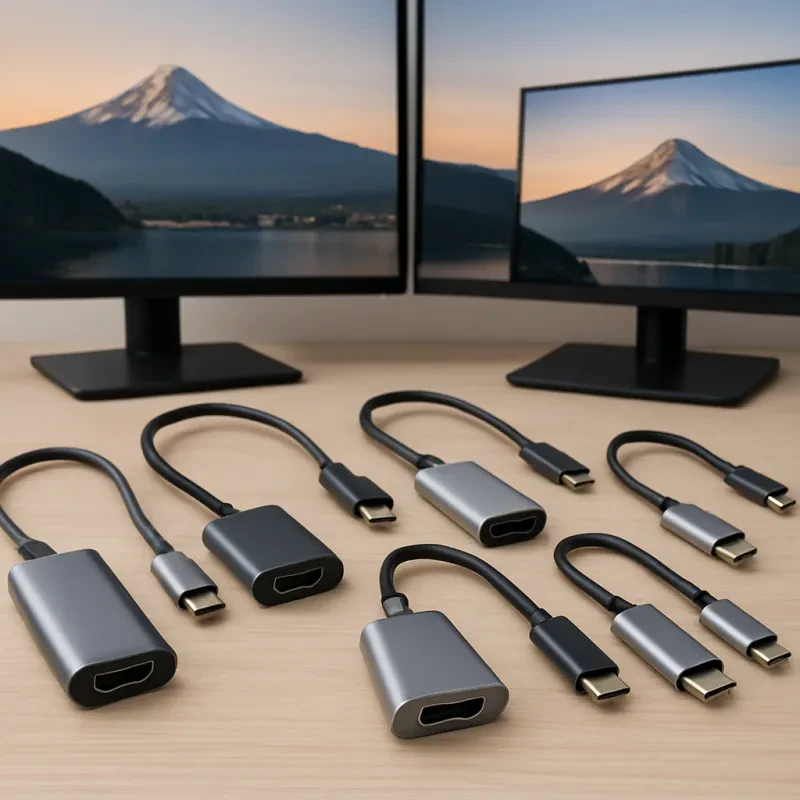The Rise of USB-C: What it Means for Mac Users
Mac users have always had a reputation for being tech-savvy, and with the rise of USB-C, they’ve got even more reason to strut their stuff. USB-C is a versatile and powerful technology that’s quickly becoming the standard for data transfer, charging, and connectivity across a range of devices, including Macs.
But what is USB-C, and why is it such a big deal? In this article, we’ll delve into the world of USB-C and explore what it means for Mac users.
First, let’s start with the basics. USB-C is a new type of connector that’s smaller and faster than its predecessors. It’s also reversible, so you can connect it to your Mac or other device in any orientation. This means no more fumbling around trying to figure out which way is up when plugging in your device.
But USB-C isn’t just about convenience. It’s also incredibly versatile. USB-C can transfer data at speeds up to 10 Gbps, which is two times faster than USB 3.0. It can also carry up to 100 watts of power, which makes it possible to charge laptops and other high-powered devices without needing a separate power cord. And because it’s compatible with a range of protocols, including DisplayPort and HDMI, it can even be used to connect your Mac to an external display.
So, what does all this mean for Mac users? For starters, it means that your Mac just got even more powerful and flexible. With USB-C, you’ll be able to transfer large files quickly, charge your laptop without needing a separate power supply, and connect to external displays with ease. And as more and more devices adopt USB-C (including the latest iPad Pros), you’ll be able to use the same cables and adapters for all your devices.
But there’s one catch: not all Macs come with USB-C ports (yet). If you’re still rocking an older Mac model, you’ll need to invest in some adapters or docking stations to take advantage of USB-C. This can be a bit of a hassle, but it’s a small price to pay for the added functionality that USB-C provides.
In conclusion, USB-C is a game-changer for Mac users. With its speed, power, and versatility, it’s quickly becoming the new standard for data transfer, charging, and connectivity. So if you’re a Mac user looking to upgrade your tech game, USB-C is definitely worth considering.
How USB-C is Changing the Game for Apple Devices
The introduction of USB-C technology has brought significant changes to Apple’s Mac lineup. With the transition to USB-C ports on the latest MacBook Pro models, Apple has paved the way for a more convenient and faster data transfer process. Here are some of the ways that USB-C is changing the game for Apple devices:
- One Port to Rule Them All: With USB-C, Apple has created a single standardized port for all its devices. No longer do you need to have separate ports for charging, data transfer, video output or connecting peripherals. With USB-C, one port is all you need, allowing for simpler and more streamlined usage.
- Faster Data Transfer and Charging: With USB-C 3.1 speeds, transferring large files to and from your Apple device has never been faster. USB-C also allows for faster charging times, as it can provide up to 100W of power when connected to a compatible charger.
- Improved Compatibility: USB-C ports have gained popularity among many manufacturers, resulting in a wider range of compatible devices. This has made it easier for Apple users to connect their devices to a variety of accessories and peripherals, including docking stations, external monitors, and even VR headsets.
- More Durable: USB-C connectors are robust, more durable, and built to last. Unlike previous connectors that degraded over time due to frequent usage, USB-C connectors are reversible and can be plugged in either way, meaning there is no risk of damaging them.
As technology continues to advance, USB-C is rapidly becoming the go-to standard for devices across a wide range of industries, and Apple is at the forefront of this shift. By embracing USB-C and phasing out outdated ports, Apple has set the stage for future innovations and has ensured that their devices are equipped with the latest and most advanced technology.
The Benefits and Challenges of Adopting USB-C on the Mac
The adoption of USB-C on the Mac has both benefits and challenges. Here are some of them:
Benefits:
- Universal Compatibility: USB-C is the future of connectivity, as it provides a universal interface that can be used across multiple devices.
- Faster Data Transfer: With a USB-C connection, transferring files between different devices is much faster than with older USB ports. It also allows you to charge your devices more quickly.
- Sleek Design: USB-C has a sleek and slim design that fits well with the minimalist aesthetic of modern laptops, including the new thinner and lighter MacBook models.
- Multi-Purpose: A single USB-C port can be used for different purposes such as data transfer, charging, display output or even as an audio output through the use of adapters.
Challenges:
- Incompatibility with Older Devices: Many older devices still use the traditional USB or Thunderbolt connections, which means you may need to purchase adapters to use them with USB-C.
- Adaptor Clutter: If you need to connect multiple devices to your Mac, you may need to purchase several adapters, which can clutter your workspace.
- Cost: The cost of USB-C adapters and cables can add up, especially if you need to purchase multiple ones for different purposes.
- Learning Curve: It may take some time to adjust to the new way of connecting devices, as USB-C is still relatively new and not widely available on all devices.
Overall, the benefits of USB-C outweigh the challenges, as it is the future of connectivity, providing faster data transfer and a sleeker design. However, it’s important to be aware of the challenges that come with it and plan accordingly to avoid any inconvenience or additional costs.
USB-C headphone and charging adapter
Streamline your charging and audio experience with our USB-C headphone adapter
Product information
$29.99 $4.36
Product Review Score
4.45 out of 5 stars
204 reviews



